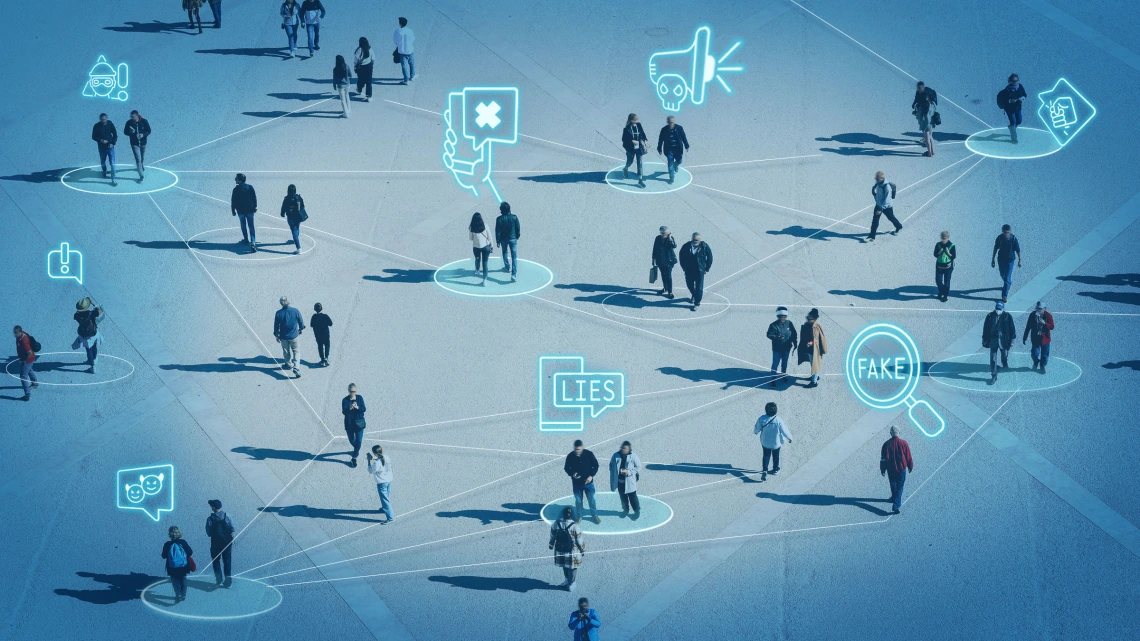Helping People SIFT Through Misinformation
Public Health’s Loren Halili says using "living room language" and listening to people’s fears are useful tools when confronting false information.

The ongoing COVID-19 pandemic is providing many lessons for health care providers, researchers and public health workers on ways to respond to other, emerging crises. These lessons include the value of long-term research on viruses, improved resource delivery and the value of public health outreach.
But one of the most wide-reaching lessons is the value of combatting misinformation, which, in the age of texts, memes and viral videos, can seem to fly around the world with the push of a button. Whether it was inaccurate stories about combatting COVID-19 with ivermectin or bleach, virus transmission methods or the virus not being real, researchers and public health advocates spent a lot of time swatting down falsehoods.
Accessible language is key

Loren Halili, MPH
One takeaway for health sciences professionals was the importance of “living room language” – speaking in accessible, conversational, plain language – when sharing and educating the public said Loren Halili, MPH, program coordinator at the Center for Rural Health in the Mel and Enid Zuckerman College of Public Health.
“As health care and public health professionals, we forget that not everyone knows the terminology that we do,” said Halili, who presented “Identifying and Addressing Health Misinformation” on Aug. 18 as part of the Arizona Center for Rural Health Fall Webinar Series.
Accessible language can help reduce the anxiety around technical scientific topics. People will be less inclined to be confused or to listen to misinformation, Halili said, adding that there is a difference between misinformation and disinformation.
SIFTing through misinformation
“Misinformation is information that is false, inaccurate or misleading according to the best available evidence at that time, regardless of intent,” she said.
Disinformation is the intentional sharing of misinformation for malicious purposes. Because it’s difficult to tell someone’s intent for sharing misinformation, making sure you know who and why something is being shared can help “SIFT” facts from falsehoods. SIFT is an acronym created by the Oregon Health Authority for stop, investigate the source, find better coverage, and trace the claims, quotes and media back to their original context.
“Misinformation is information that is false, inaccurate or misleading according to the best available evidence at that time, regardless of intent.”
Loren Halili, MPH
This method of pausing before sharing information, followed by investigating the source, can be the first two steps in putting a halt to inadvertently sharing misinformation, Halili explained. If you then look to find better coverage on a topic from reputable sources and trace the claims or quotes back to their original context, you’ll be better able to see when partial or misleading quotes or claims are being shared.
“I ask myself, who is the author of the article or resource?” Halili said when confronted with scientific misinformation. “What’s the purpose of the content? Is it satire or a real article? How does the source compare to others? Has anyone else reported on this same topic?”
“It's really important to note that misinformation does not discriminate,” she said. “It can be shared by anyone. We're all still vulnerable to share it ourselves inadvertently. And so many people who share misinformation aren't doing so to purposely misinform. They might be doing it to raise a concern, make sense of conflicting information that they're confused about or seek answers to honest questions that they have.”
“When we're unsure or frightened, we often seek and share information that can provide explanations without checking where or who it came from.”
Find out the ‘why’ behind a fear
Another way to combat misinformation is to listen to a person’s fears and hear why they believe what they believe. Halili suggested focusing on the wider issue of why they feel the way they do, rather than the specific false information. If a health care professional immediately attacks the information, the patient may end the conversation and reject the science. This can also be a good time to explain how scientific research works; while suggestions and advice from experts changed throughout the pandemic, it was because as researchers learned more, their information changed.
In the end, it comes down to how information is shared.
“Use inclusive language where possible, so it is clear you see yourself being impacted in the same way,” Halili said. “Showing how you sometimes struggle to figure out who or what to trust is critical when talking with people about misinformation.”
So no matter if the topic is COVID-19, monkeypox or substance abuse disorder, SIFT through the information to make an informed choice.
Watch the webinar on the Southwest Telehealth Resource Center’s website.

